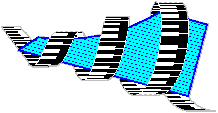
 |
PCH Publishing |
Home | Index | Two Instruments with Basso Continuo | How to order | Email
|
|
Jean-Marie Leclair (d. 1714?) View a sample page. |
DFC-18 $7.50 | ||
| Part | Number of pages |
|---|---|
| Score (with figured, unrealized bass) | ii+8 |
| Basso Continuo (viola da gamba, cello) | 3 |
| Second violin | 4 |
| Flute or first violin | 4 |
Jean-Marie Leclair (1697-1764) was a virtuoso violinist perhaps best known for bringing the use of double stops into the mainstream of French performance practice. The present trio sonata is taken from his last publication, Ouvertures et sonates en trio (1753). That volume contained 3 paired sets of overtures and sonatas. The overtures are more purely French in character while the trio sonatas contain more Italian elements. Sonata I had appeared earlier as Sonata VIII en trio for flute or violin, viola da gamba, and continuo in Leclair's Opus 2, Second livre de sonates pour le violon (1728, revised 1743), along with 11 sonatas for solo violin and continuo. That version is also available from PCH Publishing as DFC-17.
The facsimile of the 1753 volume is quite clear and contains few errors. It is therefore reproduced here virtually note for note. In particular, the figures are extremely accurate and detailed and have not been altered from the original. Of course, the accidentals have been converted to the modern convention of holding through a bar. Some explicit accidentals in the original that were not required under the baroque convention have been retained here but converted to cautionary accidentals, i.e., surrounded by parentheses. A few other cautionary accidentals have been added.
The comparison between the earlier Sonata VIII and Sonata I is intriguing. Both have the same number of bars and the same harmony. The outer parts have almost exactly the same notes. The violino secondo of the later version generally reproduces the viola da gamba part of the earlier, raised an octave. But in a few short stretches the parts are in the same octave, and in a few others Leclair rearranged or rewrote the gamba notes to fit more comfortably on the violin. The prominent flourishes at the ends of both sections of the Allegro assai have no counterpart in the gamba version. In the later edition the upper two parts have many more slurs and trills. The figures in the continuo differ in slight and usually inconsequential ways. In the earlier version, which appears as a three-line score, the continuo is labeled "Clavesin ou Violonchel." The 1753 edition was published in part books, with the continuo part headed "Organo e Violoncello."
One can only speculate as to the significance of some of these differences. Did Leclair really change his preference from harpsichord to organ?
In this piece Leclair indicated trills with a plus sign. Aside from grace notes, there are no other ornaments, including mordents. However, in keeping with period practice, it is perfectly acceptable to add other ornaments as appropriate, especially a mordent after an ascending appogiatura.
It is important to know that notational conventions of the time did not admit the use of dotted rests. In performance, the the player should add a dot to a rest when the following note leads into a notated dotted figure, such as in the very first entrances of both the violin and gamba.
This is indeed one of the finest trio sonatas of the genre, combining Italian flair and French elegance in ideal proportions. I hope you will enjoy playing it as much as I have over the years.
Don Simons
Redondo Beach, October, 2001
Top | Home | Index | Two Instruments with Basso Continuo | How to order | Email